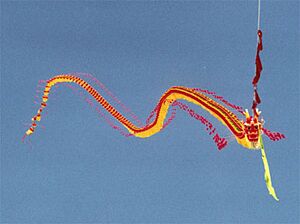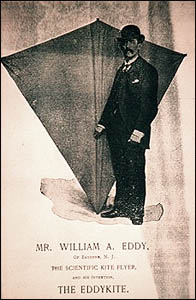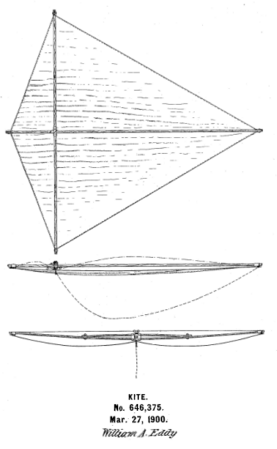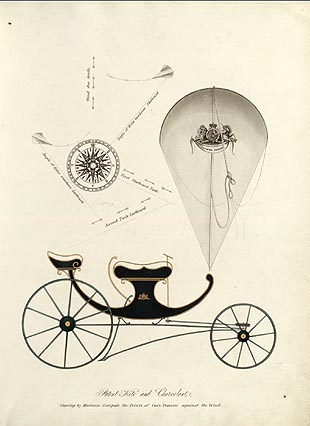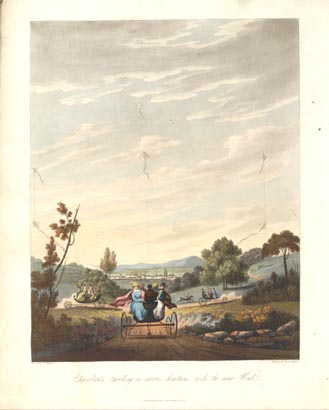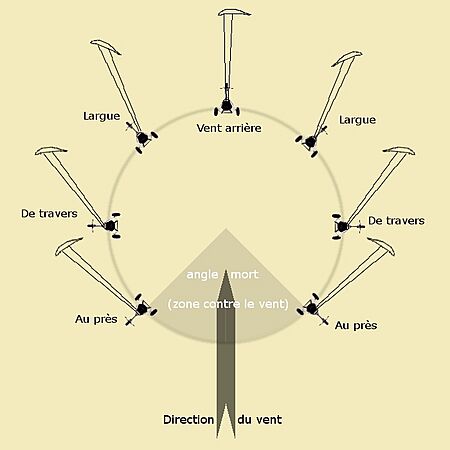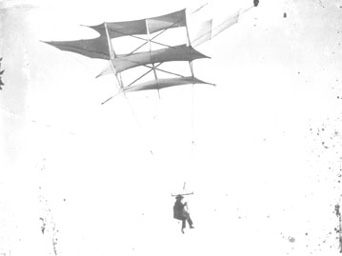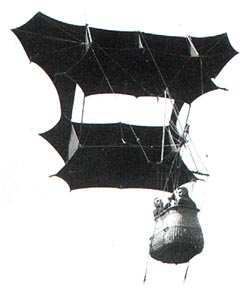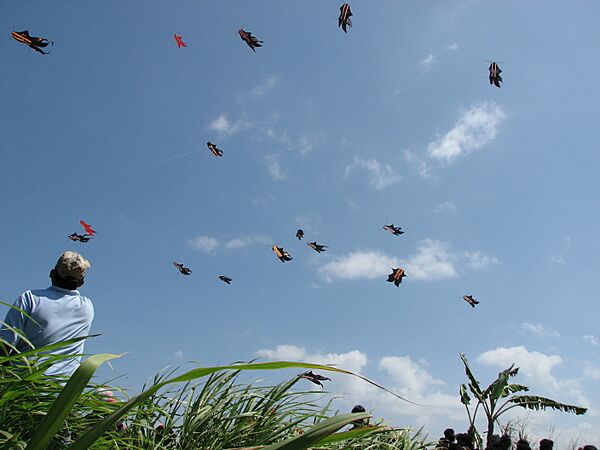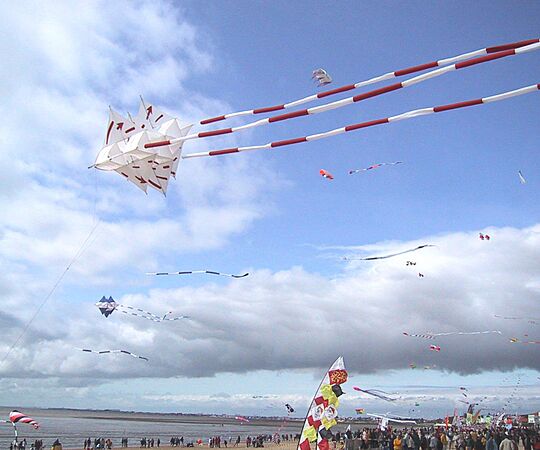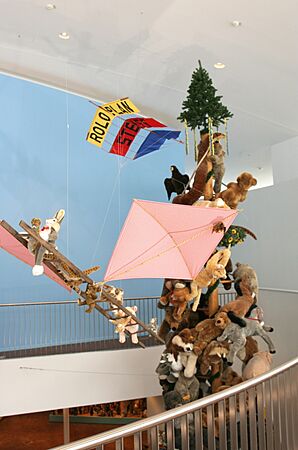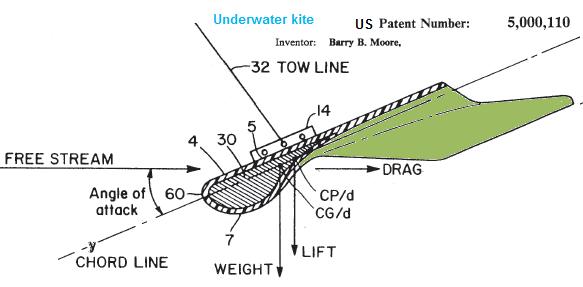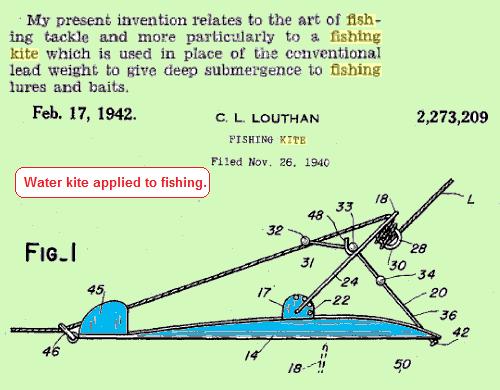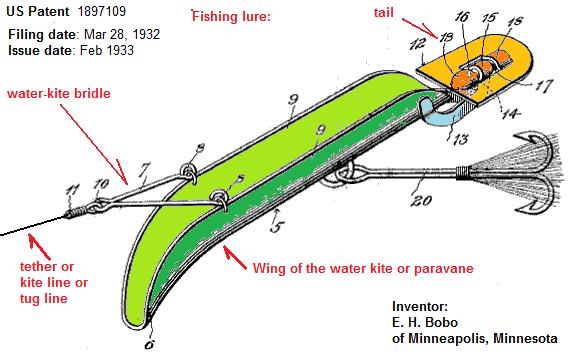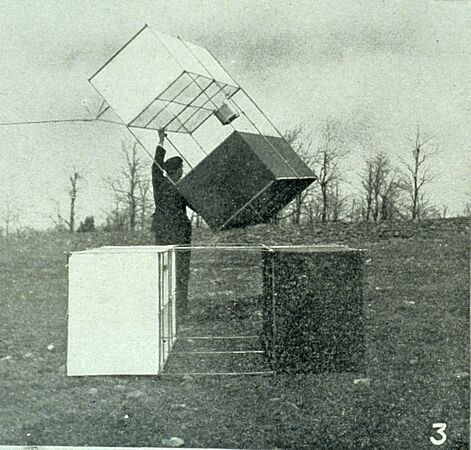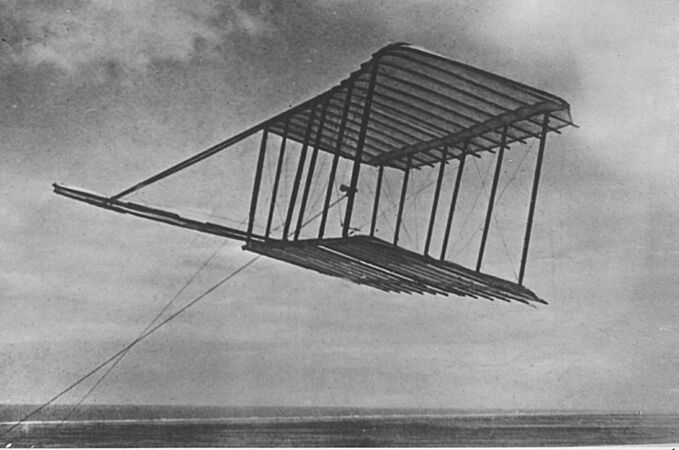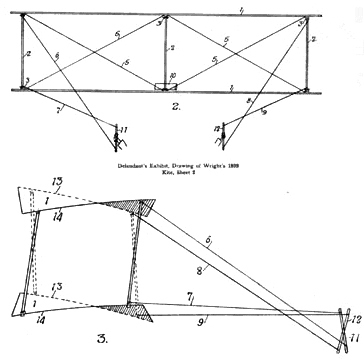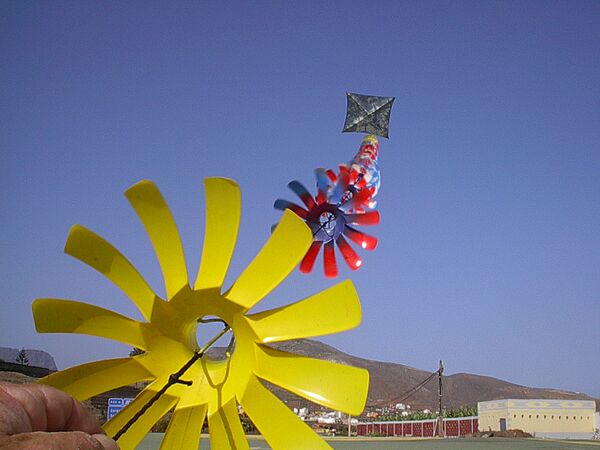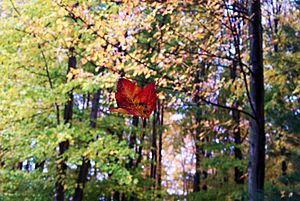Kite applications facts for kids
Kites are amazing flying objects that have been used for many different things throughout history! They can be found in many shapes and sizes, like air kites, water kites, and even special kites used for science. Did you know that some spiders even use a type of kiting to travel? Kites are not just for fun; they help people in many ways, from exploring new ideas to helping with important jobs.

Contents
Taking Pictures from the Sky
Kites can help us take cool pictures from high up! This is called Kite Aerial Photography (KAP).
Years ago, a man named William Abner Eddy used kites to lift cameras and take photos of cities and landscapes. Imagine seeing your town from a bird's-eye view, all thanks to a kite! Today, KAP is a popular hobby for many people. It's also used by scientists to survey land and animals, and by artists to create unique pictures.
KAP lets you see the world from a different angle, and it's a fun way to combine flying kites with photography.
Kites for Learning
Kites are fantastic tools for learning! They can teach us about many different subjects:
- Aerodynamics: How things fly and move through the air.
- Mathematics: Understanding shapes, angles, and forces.
- Art: Designing beautiful and colorful kites.
- History: Learning about how kites were used in the past.
- Culture: Discovering kite traditions from around the world.
- Materials: What different kites are made of and why.
- Cooperation: Working together to launch and fly large kites.
- Physical Education: Getting exercise while running and controlling kites.
- Problem Solving: Figuring out how to make a kite fly perfectly.
Kites for Travel
Kites can be used to move people and goods from one place to another! This idea has been around for centuries, but with new kite designs and better understanding of winds, it's becoming even more useful.
People can travel hundreds of miles using special kites like hang gliders and paragliders. These kites allow pilots to soar through the air, covering long distances. Even NASA has explored using free-flying kites to deliver supplies to places like Mars!
Very large kites are also being used to help cargo ships save fuel. Companies like SkySails are developing huge kites that can pull ships across the ocean, reducing the need for the ship's engine. This helps save money and is better for the environment.
Kites Pulling Cargo Ships
Imagine a giant kite pulling a huge cargo ship across the ocean! This is exactly what companies like SkySails are doing. They've developed massive kites that act like extra sails for cargo ships.
The first ship to test this was the MS Beluga Skysails in 2008. Trials showed that in good winds, the kite could help the ship save up to 30% on fuel! This is a big deal because it saves money and reduces pollution.
Using kites for ships has some cool advantages over traditional sails:
- Stronger Winds: Kites can fly much higher than a ship's mast, reaching stronger and steadier winds. A kite on a 200-meter line gets twice as much wind energy as one on a 10-meter line!
- Better Control: Kites can be moved around to catch the wind in the best way possible.
- More Power: Kites are designed to both block the wind (like a sail) and create lift (like an airplane wing), giving them a lot of pulling power.
- Easy to Use: All you need is a winch and a storage area on the ship. Traditional sails need a tall mast, which is expensive and takes up deck space.
This technology is helping to make shipping more environmentally friendly and cost-effective.
Kites for Fun and Play
Kites are fantastic for entertainment and recreation! People love flying kites for many reasons:
- Hobbies: Many people enjoy designing, building, and flying kites as a hobby.
- Festivals: Kite festivals are popular events where people gather to fly all sorts of amazing kites.
- Art: Kites can be beautiful works of art, with intricate designs and vibrant colors.
- Meditation: For some, the peaceful act of flying a kite can be very relaxing.
- Sports: Kiting has grown into many exciting sports.
Extreme Kite Sports
If you like adventure, you might enjoy extreme kite sports! These include:
- Kiteboarding: Riding on water with a board while being pulled by a kite.
- Kite surfing: Similar to kiteboarding, but often involves waves.
- Kite buggying: Riding a special buggy on land, pulled by a kite.
- Kite landboarding: Riding a skateboard-like board on land, pulled by a kite.
- Snowkiting: Skiing or snowboarding while being pulled by a kite on snow.
Competitions are held for many of these thrilling sports!
Competitive Stunt-Kiting
Stunt-kiting is a popular sport where people control kites with two or more lines to perform amazing tricks and routines. Peter Powell helped make stunt-kiting popular with his two-line kites. Today, kites with four lines, like the Revolution kite, allow for incredibly precise flying. People compete to show off their skills, making stunt-kiting an exciting and growing sport.
Kite Fighting
Kite fighting is an ancient sport, possibly 2000 years old, where people try to cut down other kites using their kite lines. It's very popular around the world. The kite line is a very important part of this activity!
Kites for Decoration
Kites can also be used to make places look beautiful! You might see kites hanging in homes, shops, or even train stations as decorations. They add a fun and colorful touch to any space.
Kites for Fishing
Yes, kites can even help with fishing! There are several ways kites are used in fishing, whether for fun or for catching lots of fish.
Kites can help fishermen:
- Lift fishing lines high over the water.
- Spread out fishing nets underwater.
- Control bait as it's trolled through the water.
- Even take aerial photos of the fishing area!
People in the Solomon Islands have used leaf kites for fishing for a very long time. They make kites from sago palm or ivory nut tree leaves to help them catch fish.
Kites in the Military
Kites have played a role in military history for many purposes:
- Signaling: Sending messages across distances.
- Observation: Lifting observers high up to see enemy positions.
- Delivering Supplies: Dropping goods from aircraft to the ground.
- Raising Antennas: Lifting communication antennas for better radio signals.
- Defense: Barrage kites were used to protect ships from enemy aircraft during World War II.
A Korean general named Kim Yu-Sin used a kite in 637 C.E. to rally his troops by flying a burning ball into the sky. Later, Admiral Yi of Korea used kites with special markings to give orders to his navy during battles in the 1590s.
During World War II, barrage kites were used to protect ships. Kites and special kite-balloons (called kytoons) were also used to lift communication antennas. Even submarines used rotary kites to lift observers into the air!
Kites in Science
Kites have been very important in science and understanding our world.
- Electricity: Benjamin Franklin famously used a kite in his experiment to prove that lightning is a form of electricity.
- Early Aircraft: Kites were like the first airplanes! Inventors like Alexander Graham Bell, the Wright brothers, and Lawrence Hargrave experimented with large kites as they worked on creating flying machines.
- Weather Forecasting: Kites were used to lift scientific instruments high into the sky to measure things like temperature and humidity for weather forecasts.
Testing Flying Machines
Kites were crucial for inventors trying to build the first aircraft. The Wright brothers, for example, used kites to test their ideas about how wings work and how to control a flying machine before they built their first successful airplane.
Kites for Power
Kites can even help us generate electricity! Both air kites and underwater kites can be used to harness the power of wind or water currents.
- Wind Power: Companies like Makani Power are researching how to use kites to capture strong winds high in the sky and turn that energy into electricity.
- Tidal Power: Special "tidal kites" operate underwater, using the strong currents of tides to generate even more electricity than wind kites.
These projects are exploring new ways to create clean energy using the power of kites!
Kites in Nature
Did you know that nature has its own "kites"?
Some leaves act like kites! They sway in the wind while still attached to their branches. When autumn comes, the leaf stems disconnect, and the wind helps the leaves fly off the trees and gently float to the ground. Some artists even collect leaves and turn them into tiny kites to fly again!
Spiders and Kiting
Billions of tiny spiders use a special kind of "kiting" to travel and build their webs. This is called ballooning. Young spiders release thin strands of silk into the air. The wind then catches these silk strands, lifting the spiders and carrying them to new places, sometimes for very long distances! It's like they're flying on their own tiny kites.


